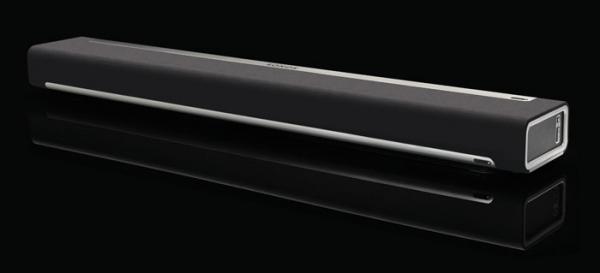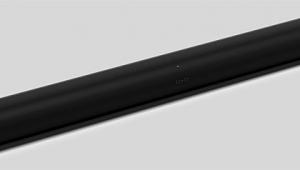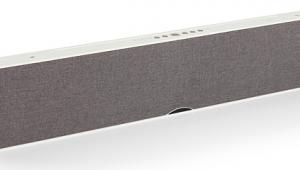Review: Sonos Playbar

I've evaluated at least 57 soundbars. That experience has taught me there are two attributes a truly great soundbar should possess. First, it should sound good. Second, it should work like it's part of your TV-i.e., it should power up and shut down when your TV does, your TV's remote should control volume and mute on the soundbar, etc.
By this measure, there's never been a truly great soundbar.
Sonos-known for network-based audio devices such as the Play:3-has attempted to create a soundbar that would meet my definition of "truly great." How confident is Sonos that the new $699 Playbar will work perfectly in concert with your TV? Pretty confident: The Playbar doesn't come with a remote.
The Playbar also offers the wireless music functions that made Sonos famous:
1) The ability to browse and play music from any computer or hard drive connected to your home network
2) Access to Internet streaming services-not just Pandora and TuneIn Radio, but also exotics like Murfee, Hearts of Space, and Wolfgang's Vault
3) Ability to control a house full of Sonos gear from your smartphone, tablet, or computer.
The Playbar's design has nine drivers: six 3.5-inch aluminum-cone midwoofers and three 1-inch aluminum-dome tweeters. The driver array is angled 45 degrees, which allows the Playbar to sit on a table or be mounted on a wall above or below the TV set. Internal position sensors automatically figure out which way you have the Playbar mounted and adjust the frequency response to suit that position.
Each driver has its own Class D amplifier and is driven by a separate output from the Playbar's digital signal processor chip. Thus, each driver can get a different signal, freeing Sonos' engineers to do some fancy surround-sound simulation. The six midwoofers use phase manipulation to "beam" sound around your room, much as Yamaha's soundbars do. They also employ crosstalk cancellation to trick your ears into thinking they're hearing surround sound, as the soundbars from Polk, Definitive Technology, and GoldenEar Technology do.
Or if you prefer, you can get real surround sound from the Playbar. Set up a couple of Play:3 or Play:5 speakers in the back, pull up the configuration menu on your computer, and you can set them up to work as surrounds for real 5.1 sound. You can add a Sonos Sub if you want, too.
Mystery of the missing inputs
Here's where the Playbar will lose points with home theater cognoscenti: It lacks HDMI inputs, as well as all those fancy things that can accompany HDMI inputs, such as DTS-HD Master Audio and Dolby TrueHD lossless 7.1-channel formats.
In fact, there's just one input: a Toslink optical digital audio connector on the back.
That input will take PCM digital audio or Dolby Digital, whichever your TV puts out. Even though the Playbar could be connected to, say, a Blu-ray player, it's obviously designed to be connected to the digital audio output of a TV set.
Why so few inputs? Because that way there's less to screw up. The Playbar "listens" for a signal on the Toslink input, and when it "hears" a signal, it powers itself up and switches to that input. It's impossible to select the wrong input because there's only one. That simplicity should save you numerous distress calls from your significant other.
The lack of HDMI, lossless surround decoding, and even plain old DTS decoding may not matter much. Most TVs will send out Dolby Digital 5.1 from "internal" sources, such as the DTV tuner and Smart TV Internet services such as Vudu. But according to my sources, currently only LG and Toshiba TVs pass 5.1 signals from external sources (i.e., your Blu-ray player or cable box) through their audio outputs.
So even if your soundbar has HDMI input, in most cases it's getting a plain old 2.0-channel audio signal from your TV.
And let's not forget: Unless you hook up those extra speakers for real 5.1, the Playbar-like almost all other soundbars-is giving you a phony, simulated version of surround sound. Would you really hear the benefit of lossless 7.1 audio formats when the sound is mashed up, reprocessed, filtered, and phase-manipulated, then piped out through a compact speaker array? I bet not.
- Log in or register to post comments




































































